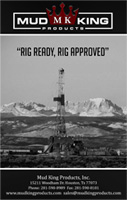What to Look for in Fluid End Modules & Parts
Fluid end modules form the core of a mud pump system. They drive drilling operations forward while keeping crews safe and equipment reliable. In oil and gas, performance is everything.
One weak component can cause downtime, lost production, and costly repairs. Selecting high-performance parts is essential for consistent flow rates and withstanding high pressures.
Let’s break down the key factors to look for when choosing fluid end modules. We’ll include material quality, pressure performance, compatibility, durability, and compliance with industry standards.
Material Quality & Heat Treatment
The strength of a fluid end module starts with the material it’s made from. High-quality alloys are vital to withstand harsh drilling environments. Exposure to abrasive fluids, extreme temperatures, and heavy loads is the norm. Substandard metals wear quickly, leading to cracks, leaks, and unplanned downtime.
Alloy Selection
Fluid end modules built from high-quality alloys provide superior resistance to wear. These alloys maintain structural integrity under high-pressure loads. This extends the working life of the pump and reduces the frequency of part replacements.
Wear Resistance
The constant movement of abrasive fluids puts strain on fluid end components. Alloys with high wear resistance reduce erosion and surface damage. This helps maintain flow efficiency and prevents performance decline during extended drilling runs.
Stress Cracking Prevention
Heat-treated alloys provide added durability by strengthening the material structure. Proper heat treatment reduces the risk of stress cracking and fatigue failures. It keeps fluid end modules reliable through repeated high-pressure cycles.
Performance Under High Pressure
Mud pump systems face extreme conditions. Using the right high-pressure parts is critical for safe and efficient operations. Key benefits of choosing pressure-rated fluid end parts include:
- Parts designed for high pressure protect against sudden breakdowns
- Consistent performance reduces unplanned downtime
- Pressure-rated components improve pump efficiency under continuous use
- Reinforced strength ensures safer drilling operations
- Compatible with land and offshore drilling rigs
- Reliable manufacturers like Gardner Denver set the standard for performance
- High-pressure parts maintain flow stability in demanding conditions
We offer a complete line of interchangeable fluid end modules and accessories for triplex mud pumps, available in both 5000 psi and 7500 psi configurations. These fluid ends and components are compatible with OEM systems such as National, Emsco, Gardner Denver, Bomco, Ideco, and Oilwell.
Every part is built to the highest quality standards for top performance and long-lasting durability. Both standard OEM-style replacements and two-piece “L”-shaped fluid ends are available to meet specific operational needs.
Compatibility with Pump Systems
Not all fluid end parts are interchangeable. Using components that match your mud pump model ensures smooth and trouble-free operation. Here’s why proper compatibility matters:
- Designed to fit major mud pump models without modifications
- Off-spec parts increase the risk of mechanical failures
- Proper alignment ensures longer pump life
- Correct fit supports optimal fluid flow and pressure balance
- Easier installation saves time during maintenance
- Keeps pumps compliant with manufacturer specifications
Durability Against Stress Cracking
Mud pump parts are under constant stress. Selecting durable components helps prevent failures and extends pump life. Key advantages of high-quality, fatigue-resistant parts include:
- Stress cracking is a common problem with poor-quality materials
- Durable parts resist fatigue and extend service life
- Frequent inspections identify wear early
- Heat-treated alloys reduce cracking and corrosion risks
- High-quality parts prevent unexpected leaks or breakdowns
- Extending part life reduces replacement costs over time
- Consistent durability improves overall drilling reliability
Meeting Industry Standards
Following oil and gas industry rules is very important for fluid end modules and parts. These rules make sure the parts are made, tested, and certified to be safe and work well. Using parts that don’t meet these rules may save money at first, but can cause big problems, like system failures or safety accidents.
Certified parts are built to be strong, reliable, and consistent. They can handle the tough conditions of oilfield work and help prevent serious breakdowns. Certified suppliers keep your operation following the rules, protecting your workers and equipment.
In oilfield work, safety and uptime are both critical. Using parts that meet or exceed standards is the best way to keep your job running smoothly and protect your investment.
Fluid End Modules & Parts for Reliable Operations
Picking the right fluid end modules and parts means thinking about four key things. Consider strong materials, high-pressure performance, proper fit, and meeting industry rules. Good-quality parts help mud pumps last longer, work better, and keep drilling running smoothly.
As oilfield equipment experts, we provide durable fluid end parts that keep drilling safe and cost-effective. Using the right parts for the job helps reduce downtime and get the most out of your equipment.
Need dependable fluid end modules and parts that meet top standards? Contact us for help picking the right parts for your operation.



